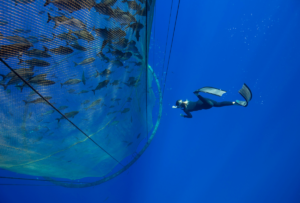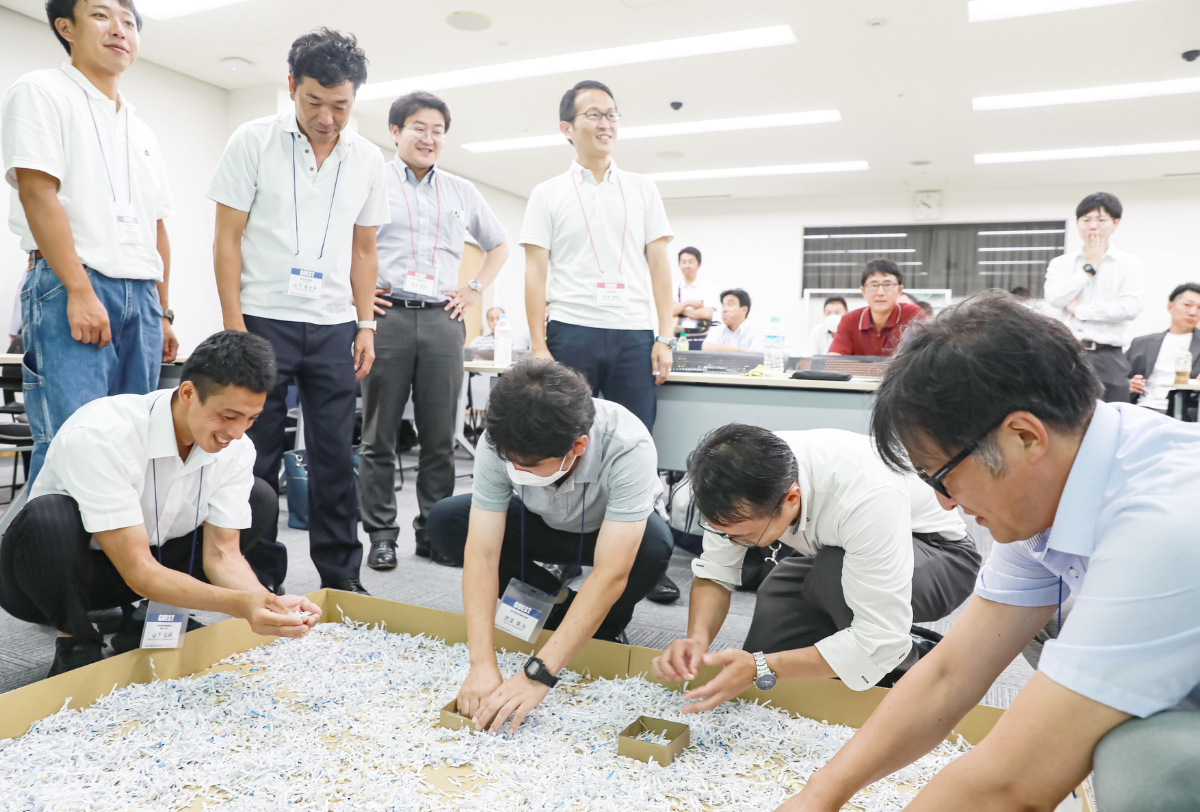
There’s No Escaping the Need to Address Escapes in Aquaculture
Open ocean aquaculture in the U.S. has the potential to create diverse local jobs, build a more climate-resilient domestic seafood supply, and minimize impacts on the climate and environment. However, achieving these benefits hinges on practicing aquaculture the right way.
So, what does the “right way” entail? What do we still need to know to make sure aquaculture is sustainable as it expands into U.S. federal waters (3-200 nautical miles)?
This is the second blog in our series covering the sustainability of aquaculture, what we currently know, emerging advancements, and where there is room for growth. Our last blog covered sustainability in aquaculture feed.
In this blog, we’re exploring escapes in aquaculture: the risks of fish escaping aquaculture pens, and best practices to prevent, minimize, and respond to escapes. This is also the subject of our recently published white paper, “Sustainability Considerations for the Expansion of US Aquaculture: Managing Risks From Escaped Fish,” which we invite you to read for a more in-depth look at the issue.
Sustainability considerations for escapes in open ocean aquaculture
A major sustainability concern for aquaculture is the risk of farmed animals escaping their aquatic pens into surrounding ecosystems. These escapes can occur during mass “escape events” due to equipment breakdown, via low-level “leakage” of a few individuals at a time through small holes, or by releasing fertilized eggs.
If “escaped” animals survive, they may threaten wild populations by competing for resources, spreading disease, and interbreeding.
For open ocean aquaculture, ecosystem impacts may be smaller because animals are more dispersed. However, escape events may occur more often in the open ocean because the offshore environment’s high-energy waves and storms put more wear and tear on farm infrastructure.
As the aquaculture industry expands, the risks associated with escapes have the potential to intensify without robust environmental protection standards in place. If widely adopted, currently recognized best practices could effectively minimize escape risks. Still, the U.S. should support research and implementation of additional approaches and emerging technologies to further enhance these safeguards.
What are the risks?
Scientists estimate that 2-5% of farmed fish escape open net pens each year, representing several million fish globally. Few long-term impacts on wild ecosystems and populations have been documented.
However, escapes are not comprehensively reported, impacts are difficult to track, and many knowledge gaps remain, especially for the offshore environment. Generally, escaped farmed fish are poorly adapted and have low survival rates in the wild.
While one-off mass escape events usually attract more media attention, addressing low-level leakage is also critical for mitigating genetic risks to wild populations because interbreeding is more likely with continuous exposure to cultured fish. Risks to wild populations increase when wild populations are weak or outnumbered, or farmed fish carry diseases.
Minimizing risk from escapes
Technological improvements and adoption of protocols have reduced the size and frequency of escape events, despite increased aquaculture production. Current best practices include:
- Conducting risk assessments to prevent escapes (combined with planning, farming standards, protocols, and staff training for escape prevention and response).
- Using innovative net materials and cage designs that can withstand open ocean stresses and damage.
- Implementing biosecurity (fish health practices) strategies to reduce the spread of disease.
- Cultivating sterile or gene-edited stocks to prevent interbreeding.
- Monitoring, documenting, and reporting escapes to relevant authorities.
- Strengthening wild populations with strong management and habitat protection; adoption of best practices in both fisheries management and aquaculture is necessary.
Recommendations to advance sustainable US aquaculture
All food systems incur environmental trade-offs, and aquaculture is no different. Many of the risks identified from open ocean cultivation are widely accepted and are also risks for terrestrial crops and livestock. However, U.S. open ocean aquaculture can push toward even greater sustainability with these recommendations:
For academic and government researchers:
- Identify and pilot cost-effective technologies and practices to mitigate escapes, via collaborative research and partnerships. Critical knowledge gaps include genetic and siting criteria to minimize ecological impacts and region-specific minimum infrastructure performance standards.
- Rapidly share research findings with aquaculture practitioners and the public.
For farmers and industry:
- Adopt best practices, publicly communicate commitments to mitigating escape risks, and transparently report on progress and outcomes to secure social license, allow for public recognition of successes, and dispel common myths.
- Conduct environmental risk assessments, including evaluating site characteristics, operational parameters, and species choice.
- Adhere to genetic, biosecurity, and post-escape monitoring protocols (e.g., marking fish for post-escape identification) and regularly roll out farm staff training.
- Develop contingency plans for escapes, including engaging recapture efforts.
For federal regulators:
- Convene an advisory committee on escape risk composed of a broad range of stakeholders.
- Mandate adoption of proven prevention and mitigation safeguards, including infrastructure standards, genetic and fish health protocols, and site and species-specific standards for equipment, operations, and monitoring as guided by risk assessments.
- Adopt a universal, interoperable, and publicly accessible data system for tracking escape events. Require reporting of the number of fish escaped, causes, mitigation efforts and success and subsequent impacts of escapees. The state-federal collaborative U.S. Fisheries Information System program provides a potential model.
- Levy fines for failure to adhere to standards or reporting requirements.
For Congress:
- Assign a lead agency to identify responsibilities for permitting and management.
- Fund research to address uncertainties in the impacts of unintentional releases.
- Invest in cost-effective technologies and practices identified by research efforts.
Minimizing the impacts of escapes is just one aspect of practicing responsible aquaculture. In our next blog, we will look at how to minimize the risk of disease.












